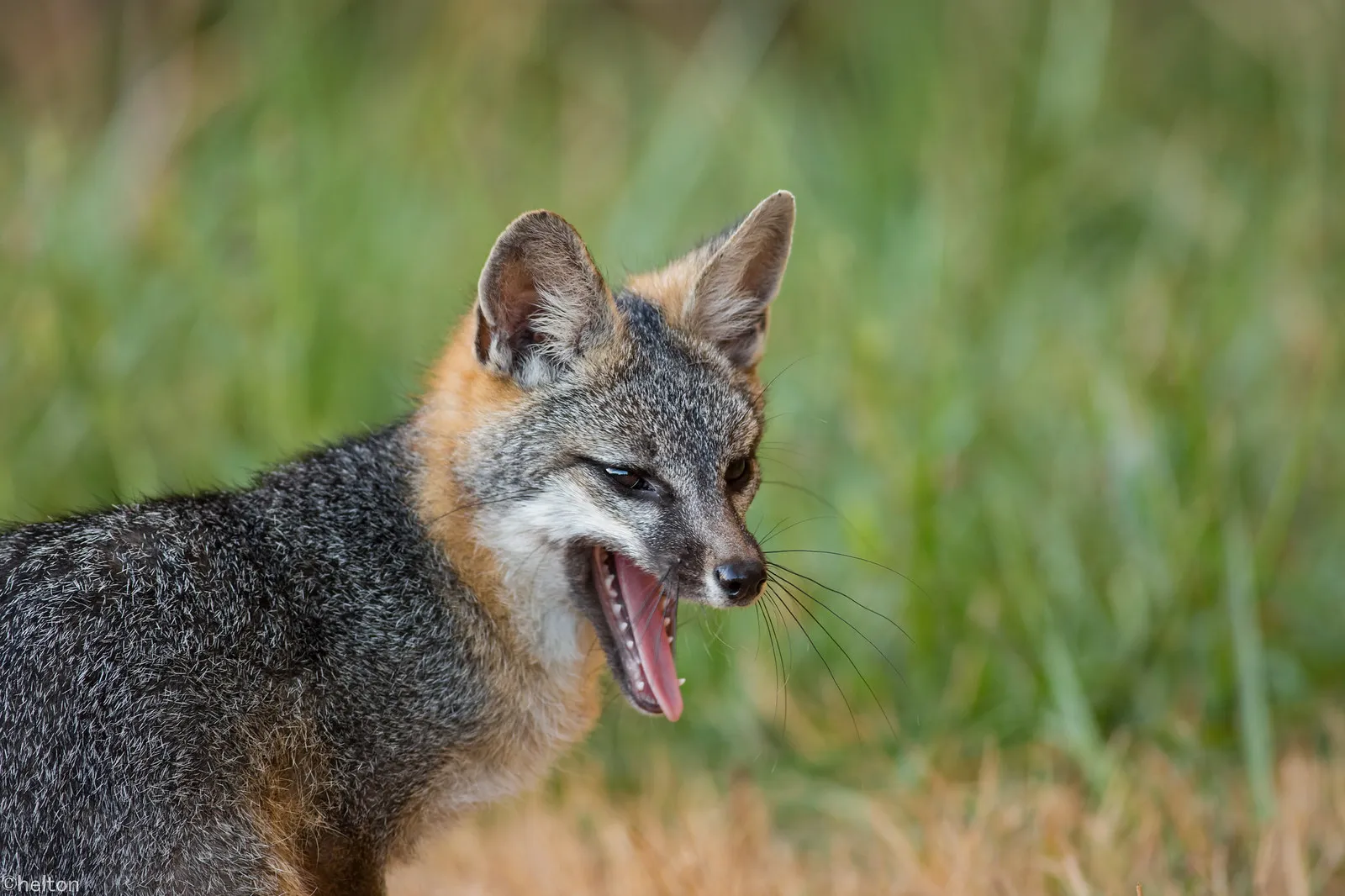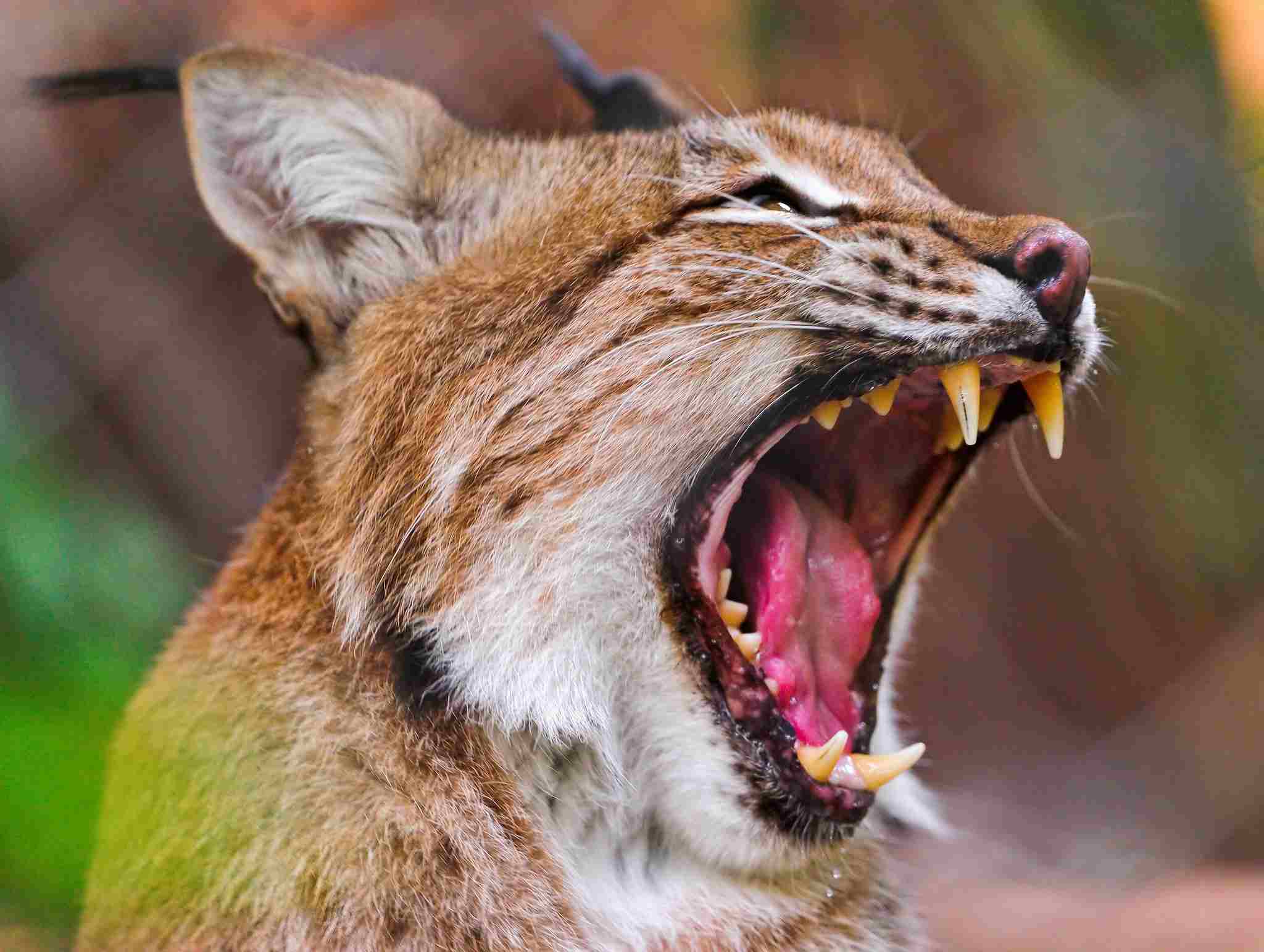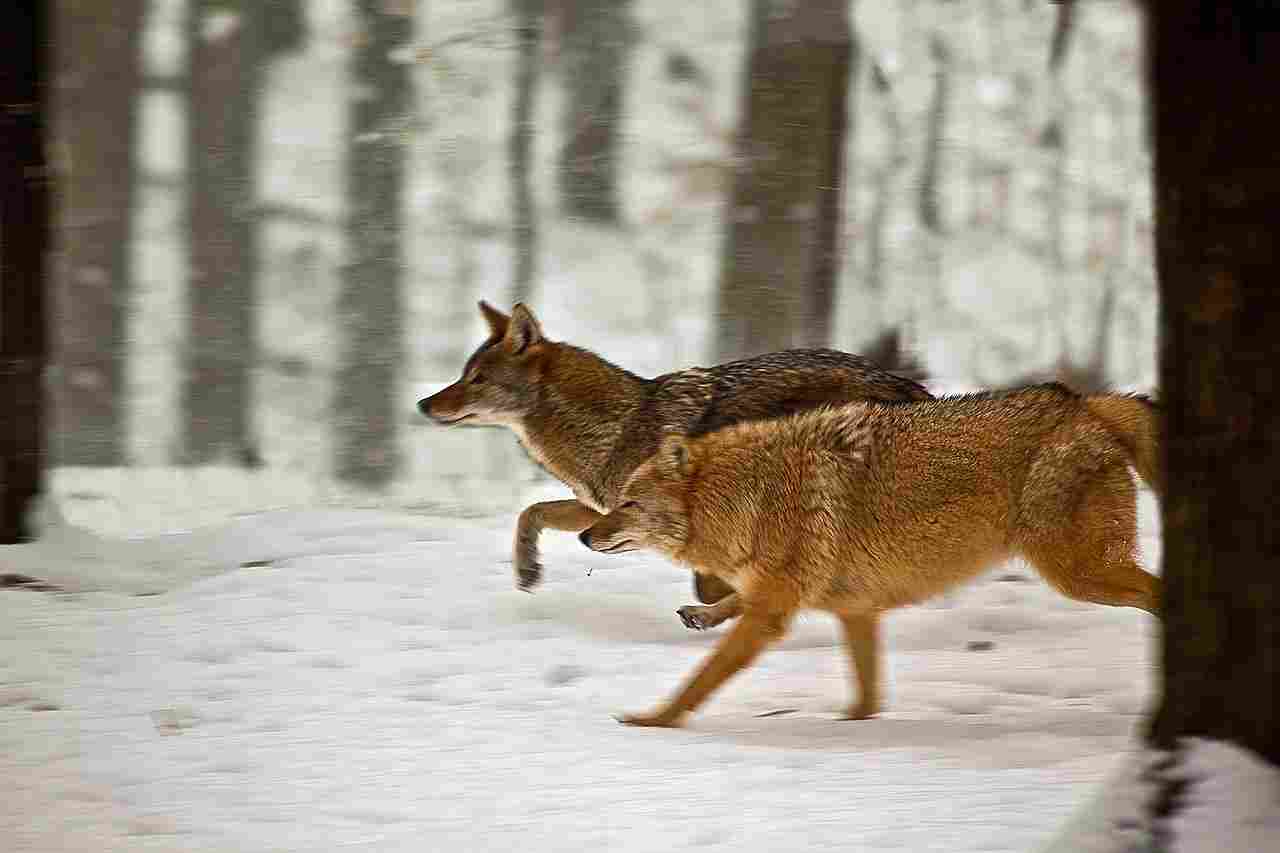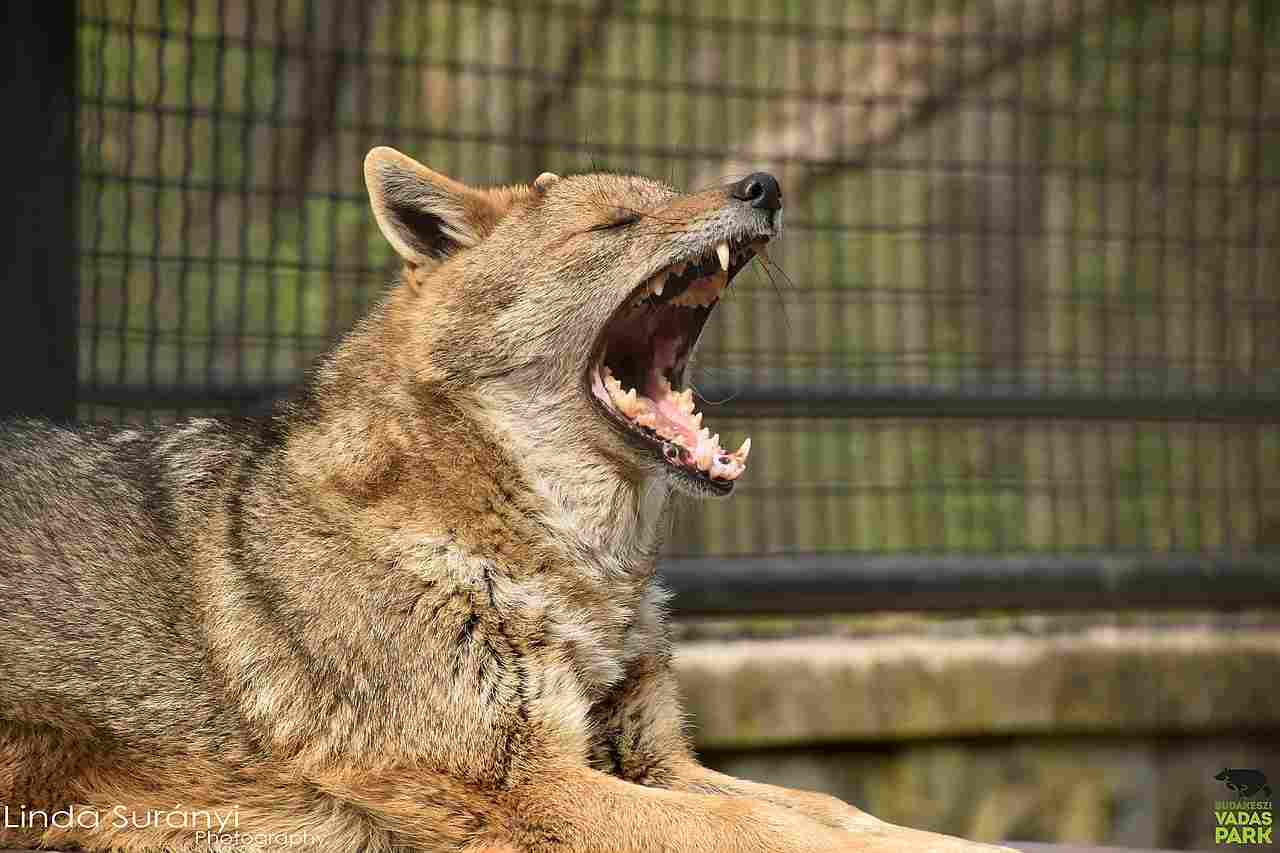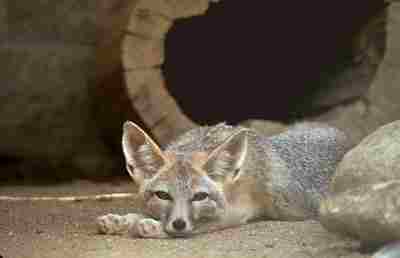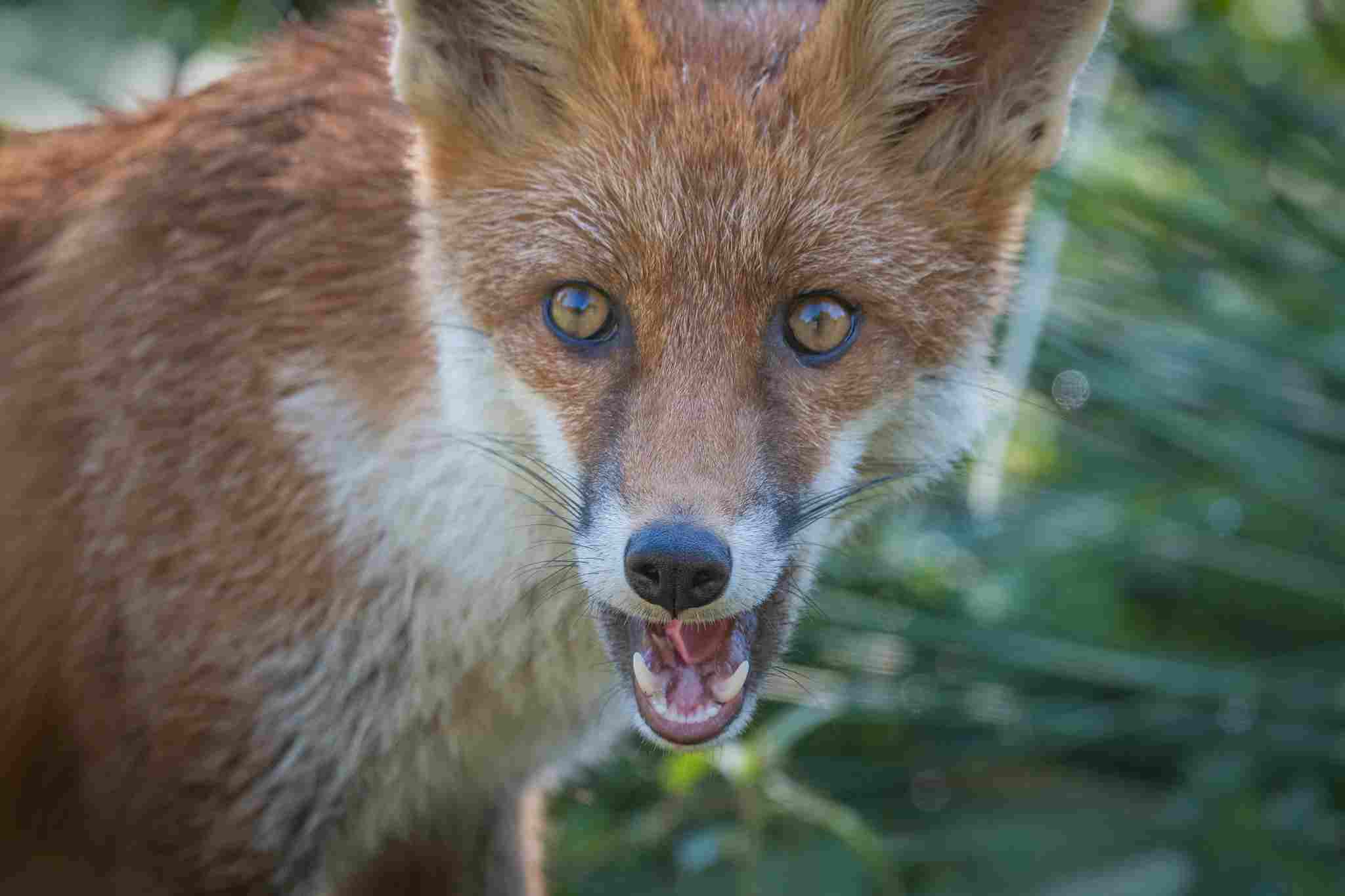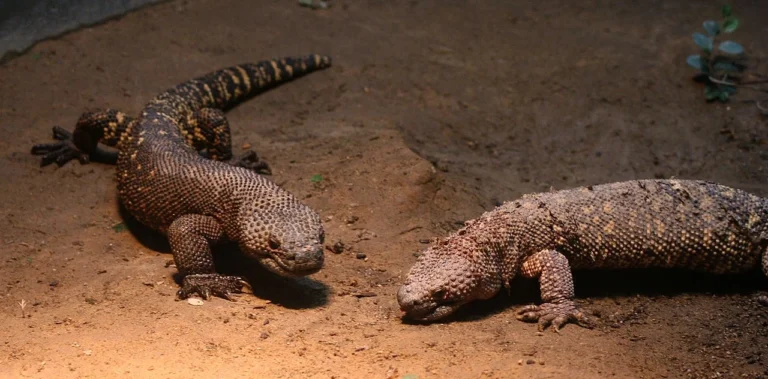9+ Predators In Michigan And Their Characteristics
Examples of predators in Michigan include the bobcat, a medium-sized wild cat known for hunting small mammals; the gray wolf, an apex predator that hunts in packs; and the American black bear, an omnivorous but shy species found in Michigan’s forests. Other notable predators include the coyote, black widow spider, and the red-tailed hawk. Despite the diverse array of predators, conservation efforts in Michigan ensure a balance in ecosystems while promoting coexistence between humans and wildlife.
1. Bobcat
The bobcat (Lynx rufus) is a medium-sized wild cat found in Michigan, known for its tufted ears and distinctive “bobbed” tail, which gives it its name. Typically, bobcats have a tawny or reddish-brown coat with black spots and streaks, providing excellent camouflage in forested environments. These agile predators are primarily nocturnal and are solitary by nature, preferring to hunt and roam alone. Their diet mainly consists of small mammals like rabbits, hares, and squirrels, but they can also prey on birds, reptiles, and the occasional deer. Bobcats are highly adaptable and can be found in a variety of habitats, from dense forests to semi-open landscapes.
Bobcats are elusive and generally avoid human contact, which contributes to their enigmatic reputation. Despite their elusive nature, they play an important role in the ecosystem by controlling populations of small mammals and maintaining balance in the food chain. In Michigan, bobcats are protected under state wildlife regulations, with specific hunting seasons and limits to ensure their population remains healthy. Conservation efforts are crucial to maintain the delicate balance of Michigan’s diverse ecosystems, and the bobcat is a key component of this intricate web.
2. Wolf
The gray wolf (Canis lupus) is an iconic predator in Michigan’s forests, known for its social structure and cooperative hunting. Wolves are apex predators, and they typically hunt in packs, which consist of a breeding pair and their offspring. This pack behavior allows them to take down larger prey like deer, moose, and elk. They have a hierarchical structure within the pack, with a dominant alpha pair leading the group. Wolves play a crucial role in maintaining the ecological balance by controlling herbivore populations and fostering a diverse ecosystem.
In Michigan, gray wolves were once extirpated due to overhunting and habitat loss, but successful conservation efforts have led to their recovery. The state’s Upper Peninsula is now home to a stable population of wolves, where they are protected under the Endangered Species Act. Despite their recovery, wolves still face challenges, such as human-wildlife conflicts and habitat fragmentation. Continued conservation measures, public education, and careful management are essential to ensure the long-term survival of wolves in Michigan.
3. American Black Bear
The American black bear (Ursus americanus) is the most common bear species in North America and a familiar predator in Michigan’s forests. They are omnivorous, feeding on a wide variety of foods, including berries, nuts, insects, and small mammals. Despite their large size, black bears are generally shy and prefer to avoid human interaction. They are excellent climbers and swimmers, and they have a keen sense of smell, which they use to locate food sources.
Black bears in Michigan are primarily found in the Upper Peninsula and the northern regions of the Lower Peninsula. They are subject to regulated hunting seasons, which help manage their population. Conservation efforts focus on preserving their habitats and reducing human-bear conflicts, such as those involving garbage and food attractants. Public education is key to ensuring peaceful coexistence between humans and black bears, emphasizing safety and respect for these impressive animals.
4. Coyote
The coyote (Canis latrans) is a highly adaptable predator found throughout Michigan, from rural areas to urban environments. Known for their cunning and intelligence, coyotes are opportunistic feeders, consuming a diet that includes small mammals, birds, fruits, and carrion. Coyotes are typically nocturnal or crepuscular, meaning they are most active during dawn and dusk. Their adaptability has allowed them to thrive in a wide range of habitats, including forests, grasslands, and even suburban neighborhoods.
In Michigan, coyotes play a significant role in controlling rodent and small mammal populations, contributing to the balance of local ecosystems. However, their presence in urban areas has led to increased human-wildlife conflicts, as they sometimes prey on pets and livestock. To manage these conflicts, public education and non-lethal control methods are used to promote coexistence. Hunting regulations also help control coyote populations, ensuring they remain in balance with their ecosystems.
5. Black Widow
The black widow (Latrodectus mactans) is a venomous spider species found in Michigan, known for its shiny black body and distinct red hourglass marking on its abdomen. Although they are relatively small, black widows are feared due to their potent venom, which can cause severe reactions in humans. However, bites are rare, and fatalities are even rarer, as black widows are generally non-aggressive and only bite in self-defense.
Black widows are typically found in dark, undisturbed areas, such as woodpiles, sheds, and crawl spaces. In Michigan, they are more commonly found in the southern regions, where the climate is warmer. To reduce the risk of encounters with black widows, people are encouraged to wear gloves when handling wood or debris and to take precautions in areas where spiders may be hiding. Overall, the presence of black widows in Michigan is minimal, and they do not pose a significant threat to public safety.
6. Cougar
The cougar (Puma concolor), also known as the mountain lion or puma, is a large and powerful predator that has been spotted in Michigan. Historically, cougars ranged across much of North America, but their populations declined due to hunting and habitat loss. In recent years, there have been occasional sightings of cougars in Michigan, mainly in the Upper Peninsula, indicating a possible resurgence. Cougars are solitary and territorial, typically preferring remote, forested areas where they can hunt deer and other large prey.
Despite these sightings, cougars are not considered to have a stable population in Michigan, and their presence is likely due to individuals dispersing from neighboring states. Conservation efforts focus on monitoring these sightings and educating the public about cougar behavior. Although they are powerful predators, cougars are generally reclusive and avoid human interaction. To ensure safety, it’s important to maintain a safe distance from wildlife and report sightings to local authorities for further investigation.
7. Massasauga
The eastern massasauga rattlesnake (Sistrurus catenatus) is Michigan’s only venomous snake, found primarily in wetland habitats. Recognized by its rattling tail and distinct pattern of dark blotches along its back, the massasauga is a relatively small and shy snake. Despite its venomous nature, the massasauga poses little threat to humans, as it typically avoids confrontation and only strikes when provoked or threatened. Their diet consists of small mammals, birds, and amphibians, making them important in controlling these populations.
In Michigan, the massasauga is listed as a threatened species, primarily due to habitat loss and human encroachment on its native wetlands. Conservation efforts focus on protecting these wetland habitats and raising awareness about the importance of the massasauga in maintaining ecological balance. Educational programs aim to dispel myths and reduce fear surrounding rattlesnakes, promoting a safer coexistence with these misunderstood reptiles.
8. Fox
Foxes are small to medium-sized canids that inhabit Michigan, with the red fox (Vulpes vulpes) being the most common species. Known for their bushy tails and pointed ears, foxes are agile and adaptable predators. They have a diverse diet, including small mammals, birds, insects, and fruit. Foxes are typically crepuscular, being most active at dawn and dusk. Their cunning and intelligence have made them a familiar figure in folklore and stories.
In Michigan, red foxes are found in various habitats, from forests to farmlands, and even urban areas. Their adaptability has allowed them to coexist with humans, though this can lead to conflicts, especially when they prey on poultry or other livestock. Hunting and trapping regulations help manage fox populations, ensuring they remain in balance with their environments. Efforts to reduce human-fox conflicts focus on securing food sources and providing education on fox behavior.
9. Hawk
Hawks are a group of raptors, or birds of prey, that are common in Michigan. These powerful predators have keen eyesight and sharp talons, allowing them to hunt effectively from the air. The red-tailed hawk (Buteo jamaicensis) is one of the most widespread hawks in Michigan, known for its distinctive red tail and broad wingspan. Hawks primarily hunt small mammals, birds, and reptiles, contributing to the control of these populations in their ecosystems.
In Michigan, hawks can be found in a variety of habitats, from forests to open fields, and even in urban areas. They often use elevated perches to scan for prey and can be seen soaring in the skies on thermal currents. Hawks are protected under the Migratory Bird Treaty Act, and hunting them is illegal without a permit. Conservation efforts focus on preserving their habitats and ensuring they have ample food sources. Hawks play a crucial role in maintaining ecological balance and are valued for their majestic presence in Michigan’s skies.
10. Eagle
Eagles are among the largest and most majestic birds of prey found in Michigan. The bald eagle (Haliaeetus leucocephalus), with its distinctive white head and tail, is the most famous eagle species in North America. Bald eagles are opportunistic feeders, primarily consuming fish but also scavenging and hunting small mammals or birds when necessary. Their impressive wingspan and powerful build make them skilled hunters, and they are often seen near lakes, rivers, and other bodies of water.
In Michigan, bald eagles have made a remarkable comeback after being listed as endangered due to pesticide use and habitat loss. Conservation efforts, including banning harmful pesticides like DDT and protecting nesting areas, have led to a significant recovery of the bald eagle population. Today, bald eagles can be found throughout Michigan, particularly in the northern regions and along major waterways. They are protected under the Bald and Golden Eagle Protection Act, and their resurgence is celebrated as a symbol of successful wildlife conservation.
*Summary
-
Bobcat: Medium-sized wild cat; solitary; hunts small mammals and birds; found in forests and semi-open landscapes; protected with hunting regulations.
-
Wolf: Social apex predator; hunts in packs; important for controlling herbivore populations; recovered in Michigan’s Upper Peninsula.
-
American Black Bear: Omnivorous; shy; found in forests; subject to regulated hunting; conservation efforts focus on habitat preservation and reducing human-bear conflicts.
-
Coyote: Highly adaptable; opportunistic feeder; found in urban and rural areas; plays a role in controlling rodent and small mammal populations; managed through hunting regulations and public education.
-
Black Widow: Venomous spider; small and generally non-aggressive; found in dark, undisturbed areas; minimal threat to public safety; more common in southern Michigan.
-
Cougar: Large solitary predator; occasional sightings in Michigan’s Upper Peninsula; not considered to have a stable population; conservation efforts focus on monitoring and education.
-
Massasauga: Michigan’s only venomous snake; shy and avoids confrontation; primarily found in wetland habitats; listed as a threatened species due to habitat loss.
-
Fox: Small to medium-sized canid; adaptable; found in various habitats; subject to hunting and trapping regulations; efforts focus on reducing human-fox conflicts.
-
Hawk: Group of raptors; primarily hunt small mammals, birds, and reptiles; red-tailed hawk is common in Michigan; protected under the Migratory Bird Treaty Act.
-
Eagle: Large birds of prey; bald eagle is common in Michigan; primarily feed on fish; significant recovery after conservation efforts; protected under the Bald and Golden Eagle Protection Act.
| Predator | Description |
| Bobcat |
Medium-sized wild cat; solitary; hunts small mammals and birds.
|
| Wolf |
Social apex predator; hunts in packs; key in controlling herbivore populations.
|
| American Black Bear |
Omnivorous; shy; regulated hunting; focus on reducing human-bear conflicts.
|
| Coyote |
Highly adaptable; found in urban and rural areas; hunts rodents and small mammals.
|
| Black Widow |
Venomous spider; generally non-aggressive; found in dark, undisturbed areas.
|
| Cougar |
Large solitary predator; occasional sightings in Michigan; not considered stable population.
|
| Massasauga |
Michigan’s only venomous snake; shy and avoids confrontation; primarily found in wetlands.
|
| Fox |
Small to medium-sized canid; adaptable; found in various habitats; focus on reducing human-fox conflicts.
|
| Hawk |
Group of raptors; primarily hunt small mammals, birds, and reptiles; protected under the Migratory Bird Treaty Act.
|
| Eagle |
Large birds of prey; bald eagle is common in Michigan; primarily feed on fish; significant recovery after conservation efforts.
|
